A Winter Trip To Alaska (Why Not?)
It was my first visit to "The Last Frontier." It was very cold and very cool.
Turnagain Arm, Alaska
WEDNESDAY, JANUARY 29
I left New York on a 7:10 a.m. flight to Seattle that left nearly an hour late and we arrived an hour late, which forced me to make a mad dash to catch my onward flight to Anchorage. I don't like mad dashes through airports, but I made it, panting and annoyed. The flight to Anchorage also left late but that didn't matter. I was going to get there sooner or later.
I rented a car at Ted Stevens International Airport (named for the Republican who served 41 years in the U.S. before dying in a plane crash in Alaska in 2010). I rented a car and drove the few miles to my hotel on a slick, snow-encrusted road through a dreary landscape of commercial malls.
When I got to my room, the smoke detector was chirping. I called down to have someone come to change the battery. A few minutes later, a service worker appeared. As he started his task, he turned to me and said, “Did you hear about the JFK files?”
I knew that President Trump had said he would be ordering the government files on the assassinations of President Kennedy, Robert Kennedy, and Martin Luther King, Jr., to be released. Had that happened?
“What did they say?” I asked.
The man paused for dramatic effect.
“LBJ ordered the hit.” He said this with a wry expression and twist of his lips as if this were something he had long known and now, finally, had been confirmed.
He proceeded to recount a complicated story, only parts of which I could follow and most of which made little sense. The upshot of it was that his grandparents had sent $4 million to someone for something and subsequently died in a suspicious plane crash and that had something to do with the JFK "hit." There was more. A lot more. He said former Defense Secretary Robert McNamara knew about this and had confronted him - the workman - on the streets of Lake Tahoe, California and threatened him. In fact, he said, he narrowly escaped an attempt on his own life before moving (or fleeing?) to Alaska two years ago.
I asked, "How do you like Alaska?"
"Eh," he said with a shrug. "I won't be here much longer. I'm going across the pond.”
"Where is 'across the pond'?"
“Russia.” He whispered this, presumably in case there were hidden microphones.
“Russia?”
“Yeah,” he said. “I'm getting a light amphibious plane. Then all I have to do is let them know when I’m ready. They’ll make a home ready.”
I had always heard Alaska was a magnet for adventurers and outdoors people, but also outlaws and eccentrics. I thought, welcome to Alaska. The Last Frontier, as it says on license plates.
Sunset, Anchorage
The waiter at Simon and Seafort’s restaurant in downtown Anchorage was white-haired, slightly stooped, and friendly. I asked him for a recommendation for what to have. At his suggestion, I went with a blueberry glazed salmon, local oysters and a local beer. We chatted. John moved to Alaska from Seattle 25 years ago for work, but what attracted him was the opportunity to climb mountains and glaciers. He has climbed Denali four times. To my great relief, he was not crazy.
My meal was excellent. Over key lime pie for dessert (we were about 5,000 miles from the Florida Keys), I asked where I should go the next day to see wilderness.
“Drive up to Eagle River, get off and go about 12 miles further and you’ll reach Chugach State Park,” he said. “It’ll be cold but if you dress for it, there are trails you can hike. If it’s too cold, you can just go to the visitor center.”
THURSDAY, JANUARY 30
The next morning, following the waiter's directions, I drove north from Anchorage, then onto a two-lane road that ran more or less straight through the seam of a valley hemmed in by mountains that rose steeply on either side. It was well after 10 o’clock but the sun was only just beginning to peek out from behind the folds of the mountain range straight ahead. They could have been a couple miles away or 20 miles. The scale of everything around me was so large, it was almost impossible to say.
The road ended at the parking lot of the state park visitor. There was one car parked there, covered in snow and ice. I got out. The cold hit me like a body blow. In the few seconds it took to pull my gloves out of my coat pocket and put them on, my hands were numb and aching. I checked my phone. It was 10 degrees below zero.
Eagle River Valley
The visitor center was closed, but there was a stand with trail maps. I took one, consulted it and chose the shortest route. The guide said it would take about 45 minutes. Hiking alone anytime is ill-advised. Hiking alone in sub-zero weather is just stupid. For once, stupidity was rewarded. The scenery, the landscape, the thundering quiet were a wonder. I wound my way down toward the river. Extending from the hiking path over the water were two wooden viewing platforms. The view from each was spectacular. The only sound was the rushing water - the river wasn't entirely frozen - and the crunch of my boots. I watched as, improbably, a tiny, small dark bird played or hunted in water that must have been barely above freezing. Embedded in expanses of thick ice were what looked like giant fossils of snowflakes.
I marched on. The path was alongside the river, then began to slowly turn back toward the visitor center. Another trail to my right beckoned. The road more traveled. Should I go on? I was torn. I headed down the trail that led away. A few minutes later, I began to notice that my feet and especially my toes were very cold and losing feeling. This was concerning. If I ignored it, would I be risking frostbite? I remembered tales and gruesome photos of Mt. Everest climbers who got frostbite and lost fingers and toes to gangrene. I retreated.
Downtown Anchorage after 1964 earthquake. Photo credit: U.S. Geological Survey
That afternoon, I visited Earthquake Park, a forested area just east of downtown. When the 1964 Good Friday earthquake struck southern Alaska, this wooded area and an adjacent residential neighborhood were violently thrust 100 feet and fell 25 to 40 feet. The 9.2 magnitude quake was one of the most powerful ever recorded. Anchorage was left in ruins. The smaller port cities of Valdez and Seward were destroyed. In all, 131 people were killed. Earthquake Park was left undeveloped as a memorial.
View from Earthquake Park
FRIDAY, JANUARY 31
When I told friends I was going to Alaska, the responses were either "Cool!" or "Alaska in January?" I had been to 49 states but never here. I'd been curious about it for years. Everyone I knew who'd gone on an Alaskan cruise raved about its beauty. I didn't want to go on a cruise. I wanted to be IN Alaska. The prospect of cold weather didn't deter me. I don't mind temperature extremes. I had been to Death Valley in the summer. The off-season would surely have fewer tourists and be somehow more authentic. This would be the real Alaska (admittedly, a tourist's notion). I actually wanted it to be cold.
It turned out that in the weeks before I went, it was often colder in New York City than Anchorage. It had turned colder only the day before I arrived. In the first couple of days, Alaskans I spoke to noted how strangely warm the winter had been until then. Temperatures were often in the 40s and there had been very little snow.
You can't ascribe one winter's weather to climate change. There have always been quirky seasons that violate normal weather patterns. But there is no question Alaska has been experiencing dramatic effects of a warming planet.
"It appears that the state is in the vanguard of global warming, showing recent and pervasive damage to aquatic systems and wetlands, vegetation, ice, glaciers, permafrost, animals, and even the health and economy of its citizens," wrote James K. Barnett, a former deputy commissioner of the Alaska Department of Natural Resources.
I had planned to ski at Alaska's premier ski mountain, Alyeska, about 35 miles east of Anchorage. But when I saw that the temperature would be in the single digits, I dropped that idea. Being in extreme cold is one thing. Skiing in extreme cold is another altogether. But I kept the hotel reservation. The road east, Seward Highway - which is the only road east - skirts the north side of an inlet called Turnagain Arm that was named by the frustrated explorers on British Captain James Cook's voyage in 1778 in search of a northwest passage through the Arctic Ocean. On either side of the narrow inlet, the mountains rose steeply to more than 5,000 feet. Turnagain Arm has the second highest tidal change of any body of water in the world, a difference of 27 feet. When I stopped at a turnout, the ice-packed water was rushing out to sea. An outflowing tide can attain speeds up to 15 miles an hour.
Alyeska ski mountain
Alyeska was an impressive ski mountain and, unlike Anchorage, thick with fresh snow. From my hotel room, I could see the tiny dots that were skiers cruising down the slopes. Later, I took a tram to the ski lodge near the peak. It was almost intolerably cold but worth it for the view. The sun set around 5:30 p.m., the mountain bathed in a soft golden light. The silence was profound.
Welcome to Alaska, I thought once again.
SATURDAY, FEBRUARY 1
I returned to Anchorage in the late morning. This was my final day. I had brunch at the funky Snow City Cafe downtown (eggs Benedict with salmon - very good) and then visited the outstanding Anchorage Museum. By chance, a local Black Business Expo was being held on the first floor. About a dozen Black vendors had their products and souvenirs on display and for sale. A DJ blasted music and a handful of people danced. On three screens overhead the photos and brief bios of pioneering African-American entrepreneurs dating back to the early 20th Century were projected. About 4 percent of Alaska's population is Black.
Anchorage Museum
I had come to the museum to see the native Alaskan exhibit. In a dramatically darkened room, there were displays of the crafts, clothes, hunting weapons and other artifacts of some of the largest groups of indigenous Alaskans. The artifacts were fascinating but more compelling were videotaped interviews with elders recounting the culture, traditions and language of their people and the importance of retaining them. Their story is similar to that of the native people of America. The people of this land had lived here undisturbed for thousands of years. Then the first white settlers arrived, in this case Russians from across the Bering Sea in the 17th Century - and started taking over land and exploiting it commercially. In 1867, U.S. Secretary of State William Seward famously purchased Alaska for $17 million, an act then derided as Seward's Folly. Under American occupation, the native population was discriminated against. Public schools were segregated. Many children of indigenous people were forced into white-run religious schools where they were taught their culture was uncivilized. In 1945, the discrimination was officially banned under the Alaska Equal Rights, but in reality persisted well into the 1960s.
In 1959, the Alaskan Territory was admitted to the union as the 49th state, followed soon after by Hawaii. Today, indigenous people make up about 15 percent of Alaska's population of roughly 740,000. That's equal to Seattle's but in an area twice the size of Texas, which has 30 million people.
Later, I drove around the mostly empty streets in the warmth of my rental car just seeing what I saw. I ended in a neighborhood beside the railroad line that runs along the waterfront, and then suddenly I was at what looked like a large pond, frozen and covered with snow, where dozens of people were, improbably, it seemed to me, at play. Adults and children were sharing; some passing around pucks with hockey sticks. Music blared from a tent bearing the logo of the Anchorage Department of Parks and Recreation. Far away, the line of snow-capped mountains formed the backdrop.
I saw there was a hiking trail leading away from the pond (a sign said it was Westchester Lagoon) so I went for a walk, following the path toward the elevated rail tracks, then through a tunnel, to the shore. A sign warned of the possibility of a confrontation with moose. It offered some helpful but frightening advice about what to do if you came across one, the upshot of which was: just hope you don't.
The water closest to land was weirdly gnarled and crusted with ice. Across the expanse was a peninsula studded with trees. I was a mile from downtown Anchorage and it seemed almost wilderness. It was painfully cold. Strangely, the longer I was in Alaska, the lower my tolerance for the cold became even though it had gotten gradually warmer. It was now in the mid teens and it was miserable.
Biking on ice
Three people rode past me on bikes with absurdly fat tires, then pulled to the side of the trail. I watched amazed as they proceeded to drag their bikes onto the ice, mount them and ride away from the shore for at least a hundred yards.
Westchester Lagoon
I headed back to the lagoon. The sun was starting to set now and there were fewer people out. I wandered over to a food truck. It was selling hot dogs and sausages including reindeer sausage. I asked about it.
"That's the number one seller," said the woman tending the grill. "Especially with people who aren't from around here."
I ordered and ate the reindeer sausage, of course. I will never order it again.
My flight to Seattle was scheduled to leave after 1 a.m., so I had the evening free. I returned to Simon and Seafort's and treated myself to a wagyu steak. The steak was outstanding and I had a chance to chat again with my waiter friend. He urged me to return and recommended sites I hadn't even read about in guidebooks. He offered to show me around. I had seen but a speck of this vast, intriguing land; the toenail of an elephant. It was an offer I can't refuse. I will be back.




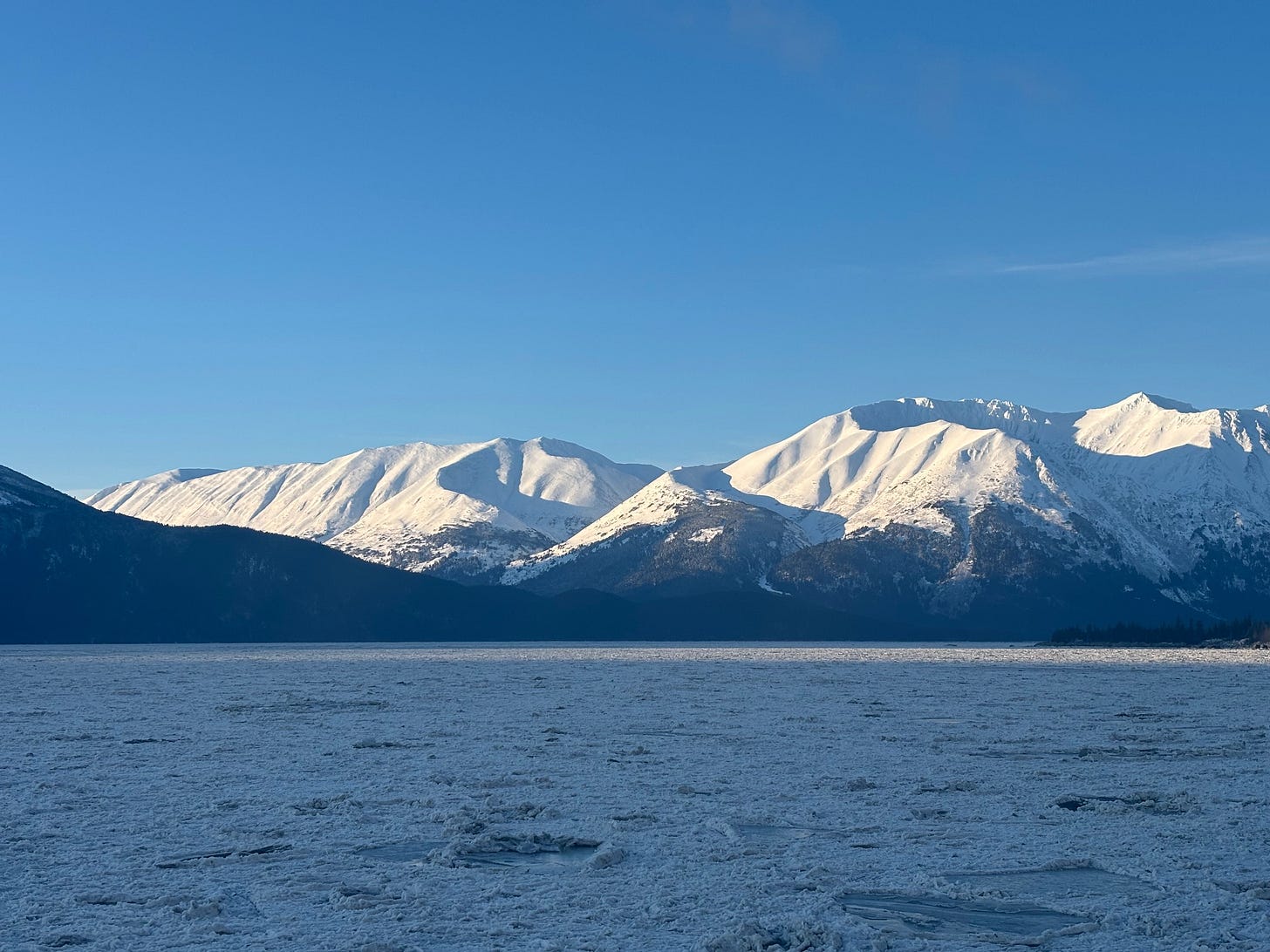


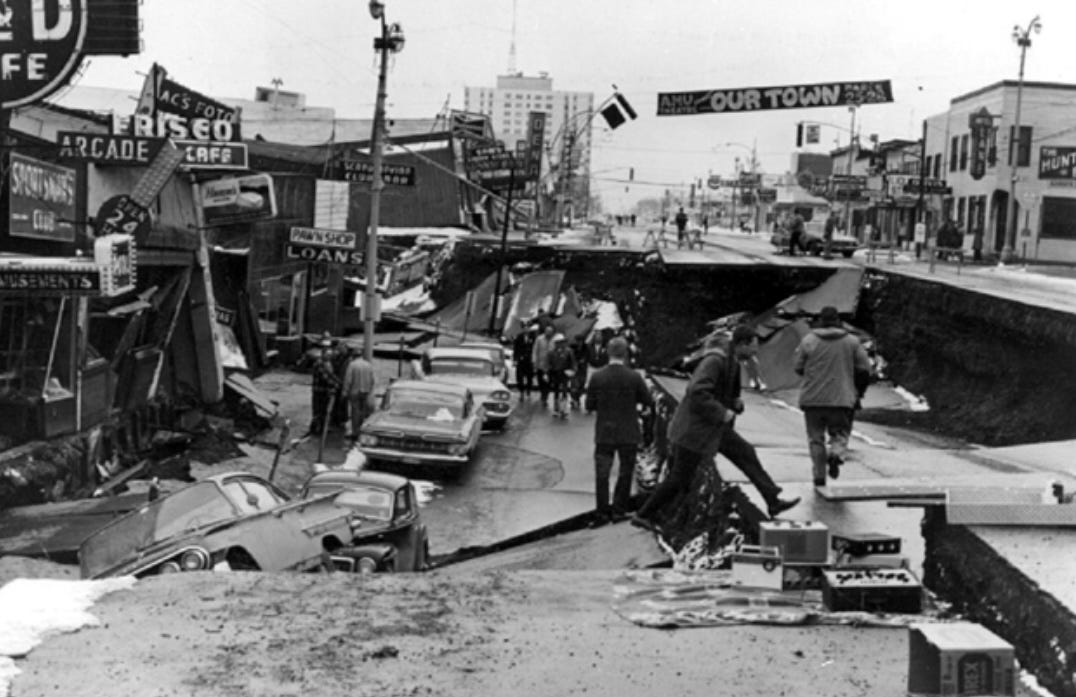
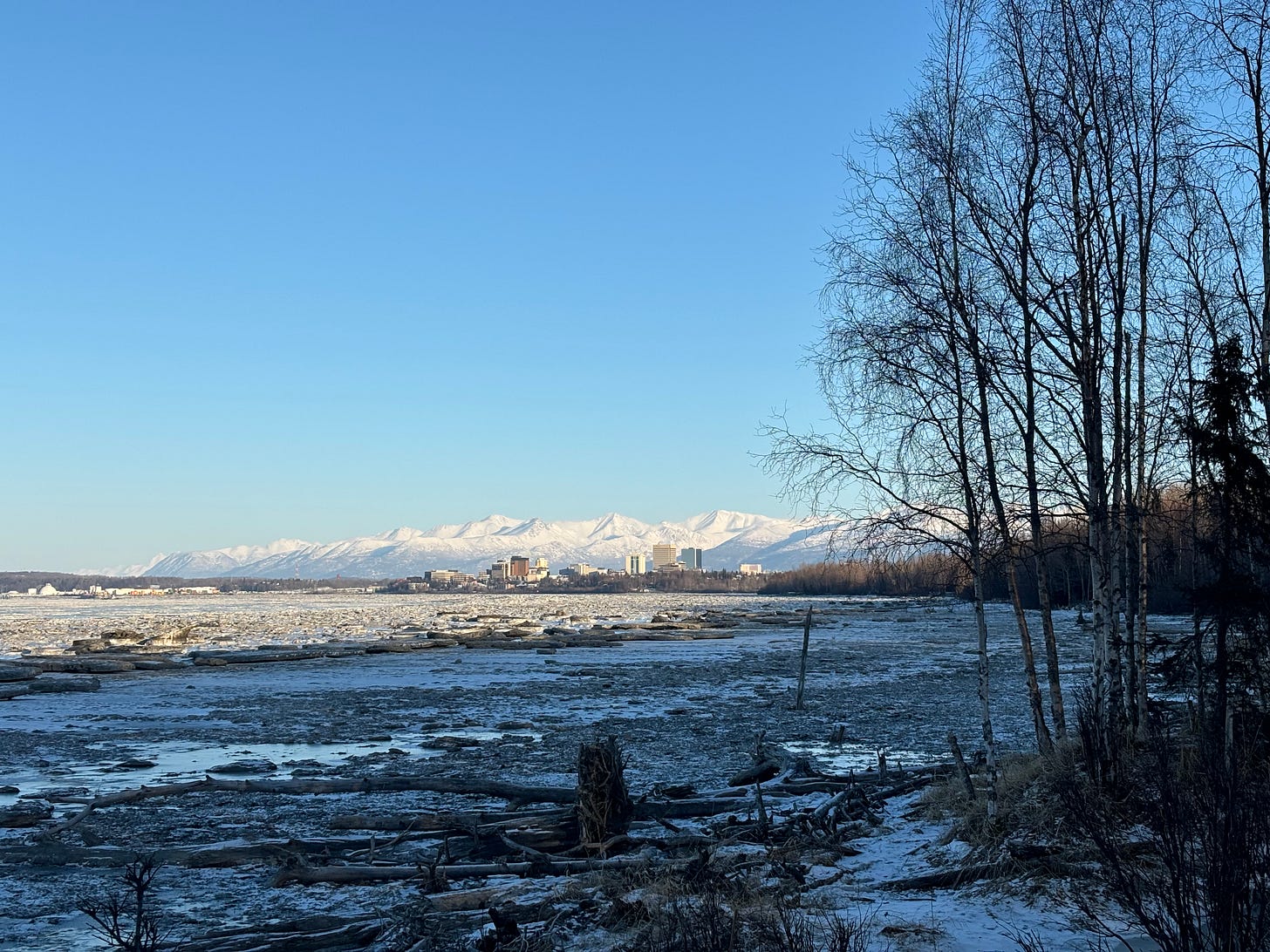
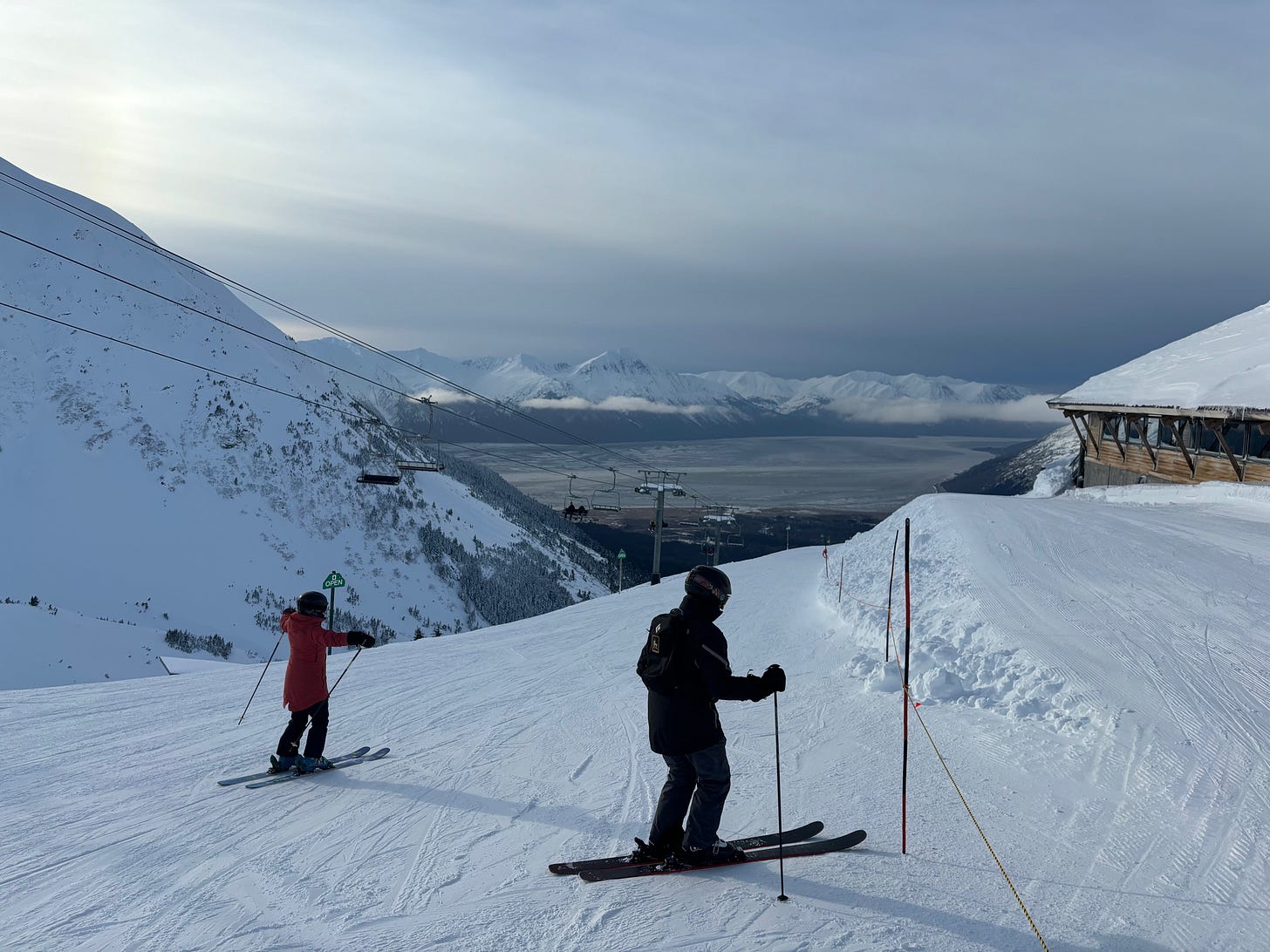
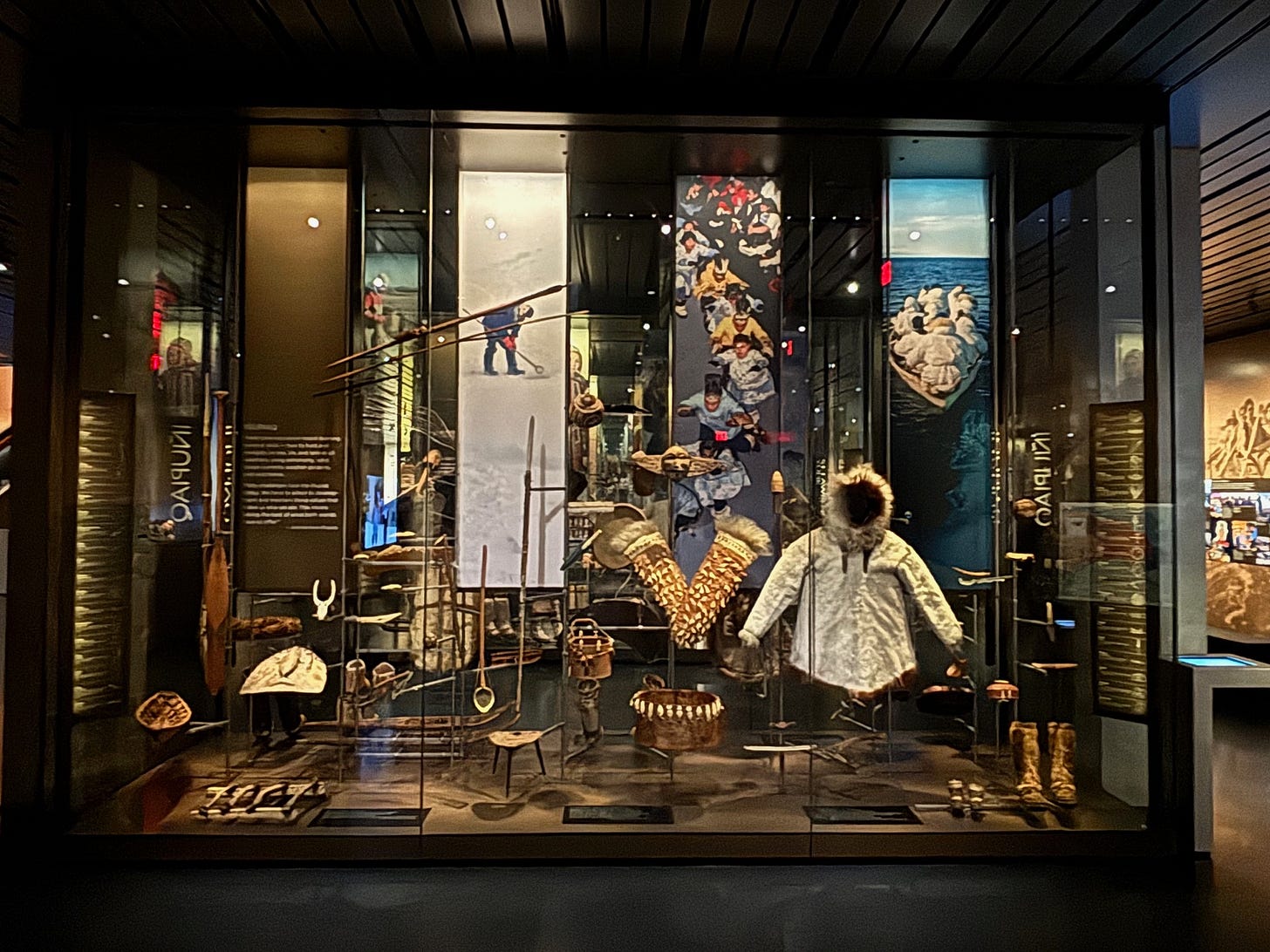
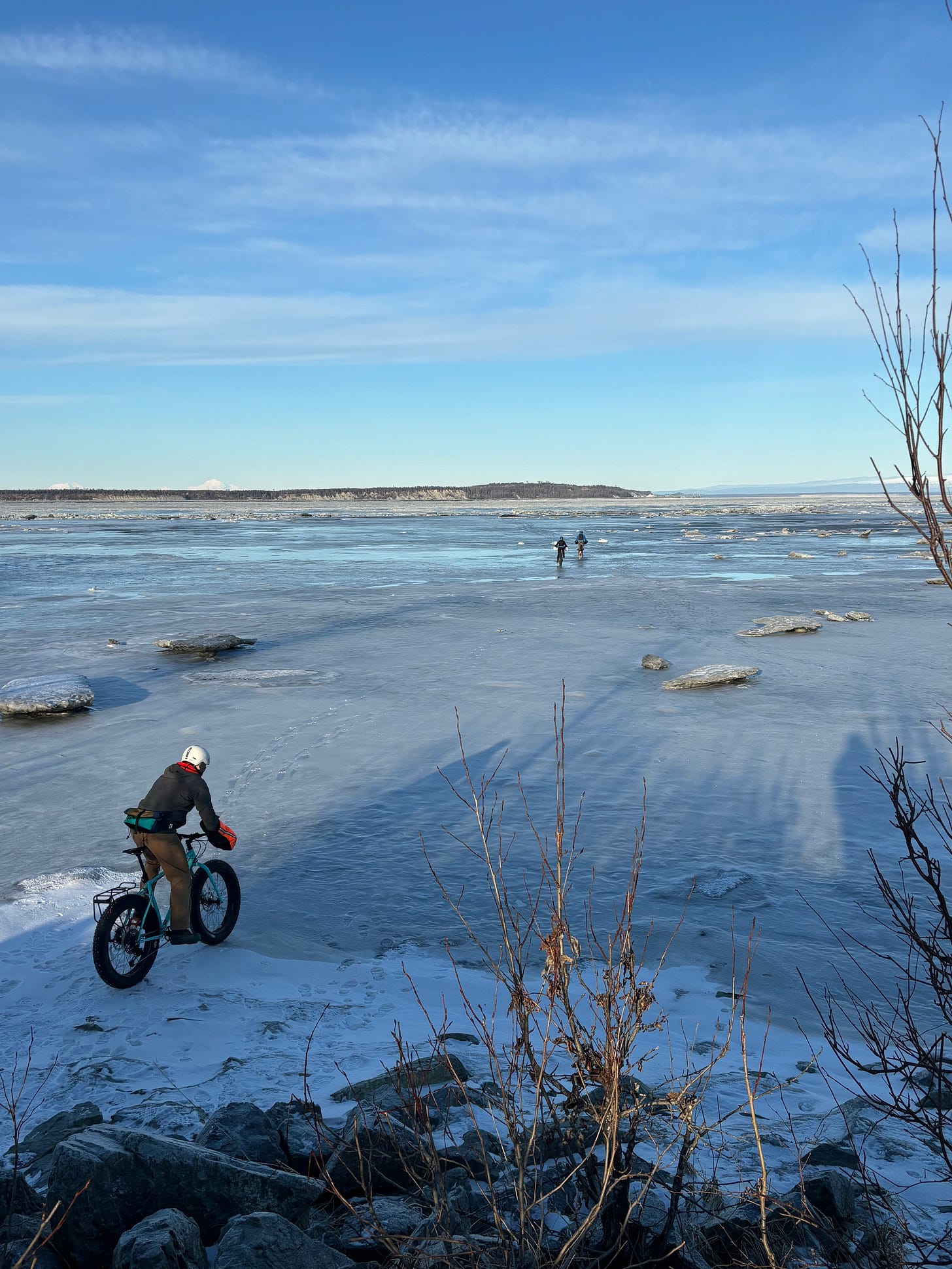
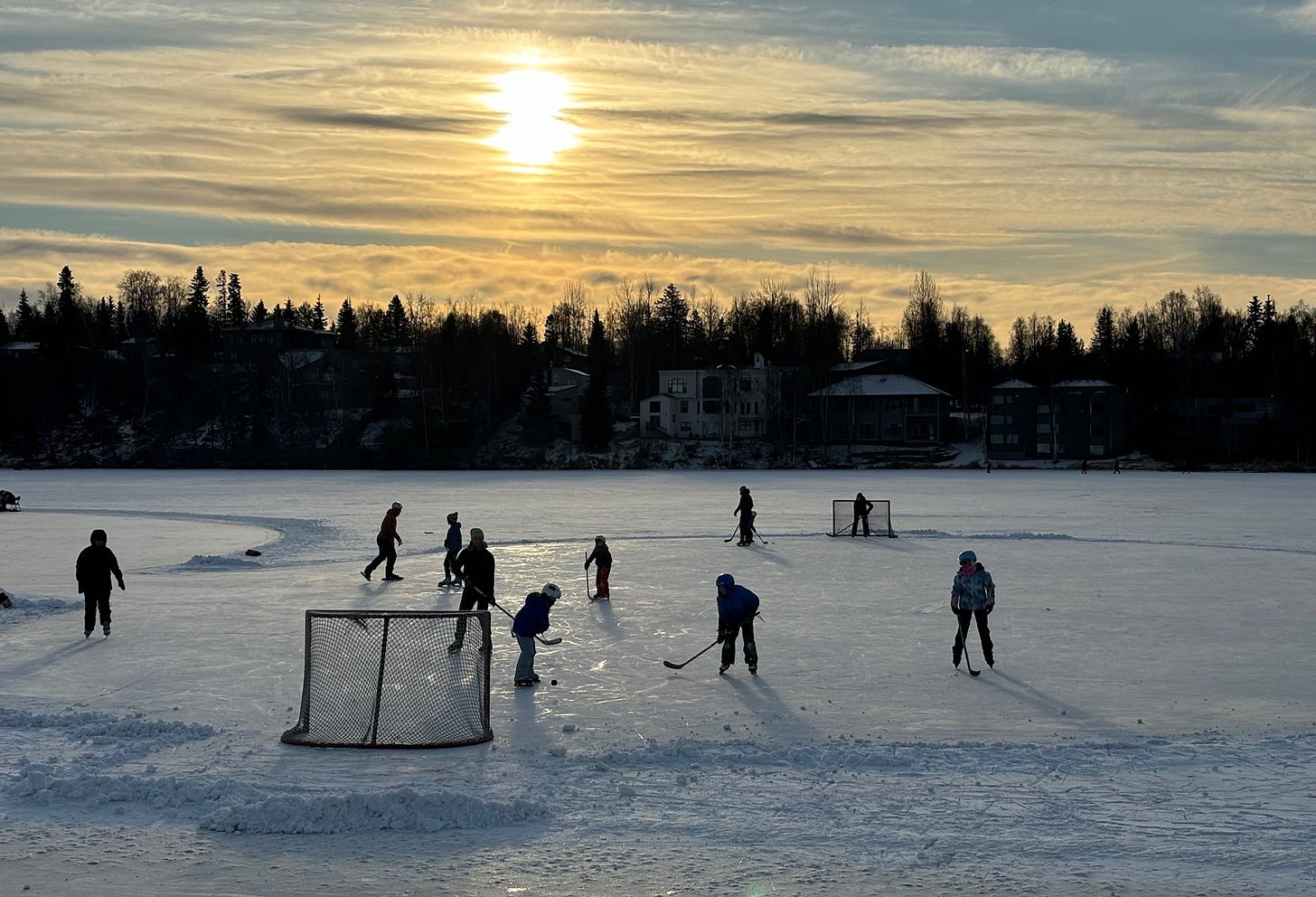
Love this Ron. I have a coffee mug from the Snow City Cafe! Apropos no??
My one trip to Alaska was amazing, wonderful, and much more. I wish I could go back - and your description of your time there was so special. SO much to see, to learn, to enjoy - and I will always remember the moose meat tacos! Thank you for this read! Blessings...:)